
Potter wasps, the Eumeninae, are a cosmopolitan wasp group presently treated as a subfamily of Vespidae, but sometimes recognized in the past as a separate family, Eumenidae.
Pachodynerus is a fairly large neotropical and nearctic genus of potter wasps with higher diversity in central South America. At least one species has been introduced in other biogeographical regions, including several oceanic islands, while Pachodynerus erynnis occurs on Ascension Island as well as in North America. This genus is most closely related to the genus Euodynerus.

Euodynerus is a genus of potter wasps with a mainly Holarctic distribution, though a number of species extend through Indomalayan, Australasian, Afrotropical and northern Neotropical regions. Also, a single species is reported from Hawaii.

Monobia quadridens is a species of solitary potter wasp found in North America. It grows to a wingspan of 18 millimetres (0.71 in), and feeds on small caterpillars and pollen. There are two generations per year, with one generation overwintering as pupae.

Pseudodynerus quadrisectus is a species of solitary mason wasp in the genus Pseudodynerus and family Vespidae, first described by Thomas Say in 1837. It includes the subspecies P. q aztecus.
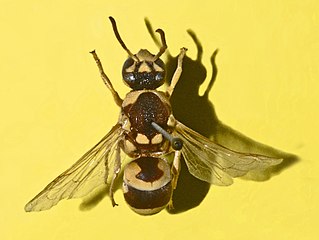
Euodynerus dantici is a species of potter wasps in the family Vespidae. This widespread species is present in most of Europe, in the East Palearctic ecozone, in the Near East, in the Neotropical Region, in North Africa and in the Oriental Region.
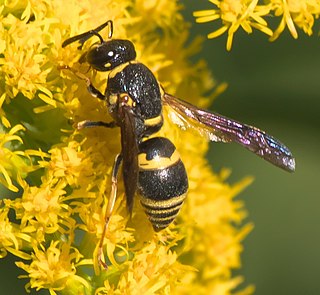
Euodynerus foraminatus is a species of potter or mason wasp in the family Vespidae.
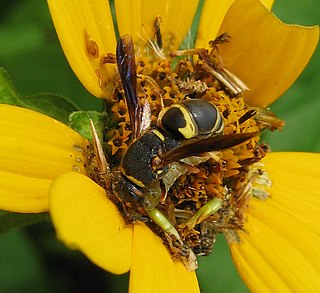
Euodynerus hidalgo is a species of potter or mason wasp in the family Vespidae.

Euodynerus auranus is a species of stinging wasp in the family Vespidae.

Euodynerus crypticus is a species of stinging wasp in the family Vespidae.

Euodynerus megaera is a species of stinging wasp in the family Vespidae.

Euodynerus schwarzi is a species of stinging wasp in the family Vespidae.

Leptochilus acolhuus is a species of stinging wasp in the family Vespidae.

Parancistrocerus histrio is a species of stinging wasp in the family Vespidae.
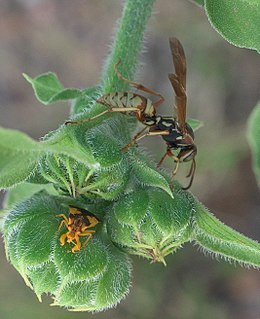
Polistes aurifer, the golden paper wasp, is a species of paper wasp in the genus Polistes of the family Vespidae. It occurs in the western part of North America, from southern Canada through the United States to northern Mexico.
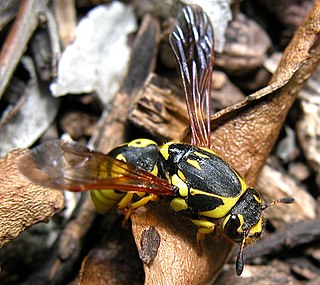
Pseudomasaris vespoides is a species of pollen wasp in the family Vespidae.

Vespula vidua, known generally as the long yellowjacket or widow yellowjacket, is a species of stinging wasp in the family Vespidae.
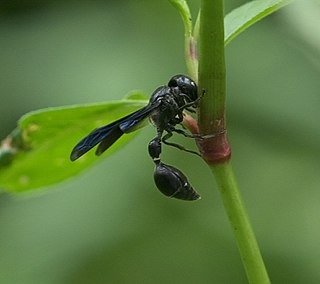
Zethus spinipes is a species of stinging wasp in the family Vespidae.
Pyrgocorypha is a genus of coneheads in the family Tettigoniidae. There are about 16 described species in Pyrgocorypha.
















